Report of a Novel ALOX12B Mutation in Self-Improving Collodion Ichthyosis with an Overview of the Genetic Background of the Collodion Baby Phenotype
Abstract
1. Introduction
2. Materials and Methods
2.1. Disease Severity Assessment
2.2. Mutation Analysis
3. Results
3.1. Case Report
3.2. Disease Severity
3.3. Mutation Analysis
4. Discussion
5. Conclusions
Author Contributions
Funding
Institutional Review Board Statement
Informed Consent Statement
Data Availability Statement
Acknowledgments
Conflicts of Interest
References
- Pigg, M.H.; Bygum, A.; Gånemo, A.; Virtanen, M.; Brandrup, F.; Zimmer, A.D.; Hotz, A.; Vahlquist, A.; Fischer, J. Spectrum of Autosomal Recessive Congenital Ichthyosis in Scandinavia: Clinical Characteristics and Novel and Recurrent Mutations in 132 Patients. Acta Derm. Venereol. 2016, 96, 932–937. [Google Scholar] [CrossRef]
- Rodríguez-Pazos, L.; Ginarte, M.; Fachal, L.; Toribio, J.; Carracedo, A.; Vega, A. Analysis of TGM1, ALOX12B, ALOXE3, NIPAL4 and CYP4F22 in autosomal recessive congenital ichthyosis from Galicia (NW Spain): Evidence of founder effects. Br. J. Derm. 2011, 165, 906–911. [Google Scholar] [CrossRef] [PubMed]
- González-Del Carmen, M.; Montaño, S.; Reyes-Hernández, O.D.; Vizcaíno-Dorado, P.A.; Leyva-García, N.; Morales-Morfín, J.C.; Diaz-Beltran, W.; Quinto-Santiago, E.; Cariño-Calvo, L.; Magaña, J.J.; et al. High prevalence of autosomal recessive congenital ichthyosis in a Mexican population caused by a new mutation in the TGM1 gene: Epidemiological evidence of a founder effect. Int. J. Dermatol. 2020, 59, 969–977. [Google Scholar] [CrossRef] [PubMed]
- Vahlquist, A.; Fischer, J.; Törmä, H. Inherited Nonsyndromic Ichthyoses: An Update on Pathophysiology, Diagnosis and Treatment. Am. J. Clin. Dermatol. 2018, 19, 51–66. [Google Scholar] [CrossRef] [PubMed]
- Hotz, A.; Kopp, J.; Bourrat, E.; Oji, V.; Komlosi, K.; Giehl, K.; Bouadjar, B.; Bygum, A.; Tantcheva-Poor, I.; Hellström Pigg, M.; et al. Meta-Analysis of Mutations in ALOX12B or ALOXE3 Identified in a Large Cohort of 224 Patients. Genes 2021, 12, 80. [Google Scholar] [CrossRef] [PubMed]
- Harting, M.; Brunetti-Pierri, N.; Chan, C.S.; Kirby, J.; Dishop, M.K.; Richard, G.; Scaglia, F.; Yan, A.C.; Levy, M.L. Self-healing collodion membrane and mild nonbullous congenital ichthyosiform erythroderma due to 2 novel mutations in the ALOX12B gene. Arch. Derm. 2008, 144, 351–356. [Google Scholar] [CrossRef]
- Rodríguez-Pazos, L.; Ginarte, M.; Vega, A.; Toribio, J. Autosomal recessive congenital ichthyosis. Actas Dermosifiliogr. 2013, 104, 270–284. [Google Scholar] [CrossRef]
- Zhou, Y.; Li, L.; Wang, L.; Zhang, C. Prenatal diagnosis of a rare variant of harlequin ichthyosis with literature review. BMC Med. Imaging 2021, 21, 56. [Google Scholar] [CrossRef]
- Simpson, J.K.; Martinez-Queipo, M.; Onoufriadis, A.; Tso, S.; Glass, E.; Liu, L.; Higashino, T.; Scott, W.; Tierney, C.; Simpson, M.A.; et al. Genotype-phenotype correlation in a large English cohort of patients with autosomal recessive ichthyosis. Br. J. Derm. 2020, 182, 729–737. [Google Scholar] [CrossRef]
- Pinkova, B.; Buckova, H.; Borska, R.; Fajkusova, L. Types of congenital nonsyndromic ichthyoses. Biomed. Pap. Med. Fac. Univ. Palacky Olomouc. Czech. Repub. 2020, 164, 357–365. [Google Scholar] [CrossRef]
- Simalti, A.K.; Sethi, H. Collodion Baby. Med. J. Armed Forces India 2017, 73, 197–199. [Google Scholar] [CrossRef][Green Version]
- Vahlquist, A. Pleomorphic ichthyosis: Proposed name for a heterogeneous group of congenital ichthyoses with phenotypic shifting and mild residual scaling. Acta Derm. Venereol. 2010, 90, 454–460. [Google Scholar] [CrossRef]
- Aradhya, S.S.; Srinivas, S.M.; Hiremagalore, R.; Shanmukappa, A.G. Clinical outcome of collodion baby: A retrospective review. Indian J. Derm. Venereol. Leprol. 2013, 79, 553. [Google Scholar] [CrossRef]
- Noguera-Morel, L.; Feito-Rodríguez, M.; Maldonado-Cid, P.; García-Miñáur, S.; Kamsteeg, E.J.; González-Sarmiento, R.; De Lucas-Laguna, R.; Hernández-Martín, A.; Torrelo, A. Two Cases of Autosomal Recessive Congenital Ichthyosis due to CYP4F22 Mutations: Expanding the Genotype of Self-Healing Collodion Baby. Pediatr. Derm. 2016, 33, e48–e51. [Google Scholar] [CrossRef]
- Rubio-Gomez, G.A.; Weinstein, M.; Pope, E. Development of a disease severity score for newborns with collodion membrane. J. Am. Acad. Derm. 2014, 70, 506–511. [Google Scholar] [CrossRef] [PubMed]
- Marukian, N.V.; Deng, Y.; Gan, G.; Ren, I.; Thermidor, W.; Craiglow, B.G.; Milstone, L.M.; Choate, K.A. Establishing and Validating an Ichthyosis Severity Index. J. Investig. Dermatol. 2017, 137, 1834–1841. [Google Scholar] [CrossRef]
- Laiho, E.; Ignatius, J.; Mikkola, H.; Yee, V.C.; Teller, D.C.; Niemi, K.M.; Saarialho-Kere, U.; Kere, J.; Palotie, A. Transglutaminase 1 mutations in autosomal recessive congenital ichthyosis: Private and recurrent mutations in an isolated population. Am. J. Hum. Genet. 1997, 61, 529–538. [Google Scholar] [CrossRef] [PubMed][Green Version]
- Becker, K.; Csikós, M.; Sárdy, M.; Szalai, Z.S.; Horváth, A.; Kárpáti, S. Identification of two novel nonsense mutations in the transglutaminase 1 gene in a Hungarian patient with congenital ichthyosiform erythroderma. Exp. Derm. 2003, 12, 324–329. [Google Scholar] [CrossRef]
- Vahlquist, A.; Bygum, A.; Gånemo, A.; Virtanen, M.; Hellström-Pigg, M.; Strauss, G.; Brandrup, F.; Fischer, J. Genotypic and Clinical Spectrum of Self-Improving Collodion Ichthyosis: ALOX12B, ALOXE3, and TGM1 Mutations in Scandinavian Patients. J. Investig. Dermatol. 2010, 130, 438–443. [Google Scholar] [CrossRef] [PubMed]
- Raghunath, M.; Hennies, H.C.; Ahvazi, B.; Vogel, M.; Reis, A.; Steinert, P.M.; Traupe, H. Self-healing collodion baby: A dynamic phenotype explained by a particular transglutaminase-1 mutation. J. Investig. Derm. 2003, 120, 224–228. [Google Scholar] [CrossRef] [PubMed]
- Cuperus, E.; Bolling, M.C.; de Graaf, M.; van den Akker, P.C.; van Gijn, M.E.; Simon, M.E.H.; Sigurdsson, V.; Pasmans, S. Collodion babies: A 15-year retrospective multicenter study in The Netherlands-Evaluation of severity scores to predict the underlying disease. J. Am. Acad. Derm. 2021, 84, 1111–1113. [Google Scholar] [CrossRef] [PubMed]
- Dogan, D.G.; Aslan, M.; Karabiber, H. A collodion baby with hypothyroidism. Genet. Couns. 2010, 21, 343–346. [Google Scholar] [PubMed]
- Kurtoğlu, S.; Caksen, H.; Erdoğan, R.; Kisaarslan, A.F. Collodion baby concomitant with congenital hypothyroidism: A patient report and review of the literature. J. Pediatr. Endocrinol. Metab. 1998, 11, 569–573. [Google Scholar] [CrossRef]
- Przyrembel, H.; Bachmann, D.; Lombeck, I.; Becker, K.; Wendel, U.; Wadman, S.K.; Bremer, H.J. Alpha-ketoadipic aciduria, a new inborn error of lysine metabolism; biochemical studies. Clin. Chim. Acta 1975, 58, 257–269. [Google Scholar] [CrossRef][Green Version]
- Hagen, J.; te Brinke, H.; Wanders, R.J.; Knegt, A.C.; Oussoren, E.; Hoogeboom, A.J.; Ruijter, G.J.; Becker, D.; Schwab, K.O.; Franke, I.; et al. Genetic basis of alpha-aminoadipic and alpha-ketoadipic aciduria. J. Inherit. Metab. Dis. 2015, 38, 873–879. [Google Scholar] [CrossRef] [PubMed]
- Verloes, A.; Hermanns-Lê, T.; Lesenfants, S.; Lombet, J.; Lamotte, P.J.; Crèvecoeur-Liégeois, C.; Duchesne, B.; Piérard, G.E. Koraxitrachitic syndrome: A syndromic form of self-healing collodion baby with residual dappled atrophy of the derma. Am. J. Med. Genet. 1999, 86, 454–458. [Google Scholar] [CrossRef]
- Farasat, S.; Wei, M.H.; Herman, M.; Liewehr, D.J.; Steinberg, S.M.; Bale, S.J.; Fleckman, P.; Toro, J.R. Novel transglutaminase-1 mutations and genotype-phenotype investigations of 104 patients with autosomal recessive congenital ichthyosis in the USA. J. Med. Genet. 2009, 46, 103–111. [Google Scholar] [CrossRef]
- Ballin, N.; Hotz, A.; Bourrat, E.; Küsel, J.; Oji, V.; Bouadjar, B.; Brognoli, D.; Hickman, G.; Heinz, L.; Vabres, P.; et al. Genetical, clinical, and functional analysis of a large international cohort of patients with autosomal recessive congenital ichthyosis due to mutations in NIPAL4. Hum. Mutat. 2019, 40, 2318–2333. [Google Scholar] [CrossRef] [PubMed]
- Hotz, A.; Bourrat, E.; Küsel, J.; Oji, V.; Alter, S.; Hake, L.; Korbi, M.; Ott, H.; Hausser, I.; Zimmer, A.D.; et al. Mutation update for CYP4F22 variants associated with autosomal recessive congenital ichthyosis. Hum. Mutat. 2018, 39, 1305–1313. [Google Scholar] [CrossRef]
- Zimmer, A.D.; Kim, G.J.; Hotz, A.; Bourrat, E.; Hausser, I.; Has, C.; Oji, V.; Stieler, K.; Vahlquist, A.; Kunde, V.; et al. Sixteen novel mutations in PNPLA1 in patients with autosomal recessive congenital ichthyosis reveal the importance of an extended patatin domain in PNPLA1 that is essential for proper human skin barrier function. Br. J. Derm. 2017, 177, 445–455. [Google Scholar] [CrossRef]
- Vahidnezhad, H.; Youssefian, L.; Saeidian, A.H.; Zeinali, S.; Mansouri, P.; Sotoudeh, S.; Barzegar, M.; Mohammadi-Asl, J.; Karamzadeh, R.; Abiri, M.; et al. Gene-Targeted Next Generation Sequencing Identifies PNPLA1 Mutations in Patients with a Phenotypic Spectrum of Autosomal Recessive Congenital Ichthyosis: The Impact of Consanguinity. J. Investig. Derm. 2017, 137, 678–685. [Google Scholar] [CrossRef] [PubMed]
- Youssefian, L.; Vahidnezhad, H.; Saeidian, A.H.; Sotoudeh, S.; Mahmoudi, H.; Daneshpazhooh, M.; Aghazadeh, N.; Adams, R.; Ghanadan, A.; Zeinali, S.; et al. Autosomal recessive congenital ichthyosis: CERS3 mutations identified by a next generation sequencing panel targeting ichthyosis genes. Eur. J. Hum. Genet. 2017, 25, 1282–1285. [Google Scholar] [CrossRef] [PubMed]
- Eckl, K.M.; Tidhar, R.; Thiele, H.; Oji, V.; Hausser, I.; Brodesser, S.; Preil, M.L.; Onal-Akan, A.; Stock, F.; Müller, D.; et al. Impaired epidermal ceramide synthesis causes autosomal recessive congenital ichthyosis and reveals the importance of ceramide acyl chain length. J. Investig. Derm. 2013, 133, 2202–2211. [Google Scholar] [CrossRef]
- Radner, F.P.; Marrakchi, S.; Kirchmeier, P.; Kim, G.J.; Ribierre, F.; Kamoun, B.; Abid, L.; Leipoldt, M.; Turki, H.; Schempp, W.; et al. Mutations in CERS3 cause autosomal recessive congenital ichthyosis in humans. PLOS Genet. 2013, 9, e1003536. [Google Scholar] [CrossRef]
- Takeichi, T.; Nomura, T.; Takama, H.; Kono, M.; Sugiura, K.; Watanabe, D.; Shimizu, H.; Simpson, M.A.; McGrath, J.A.; Akiyama, M. Deficient stratum corneum intercellular lipid in a Japanese patient with lamellar ichthyosis with a homozygous deletion mutation in SDR9C7. Br. J. Derm. 2017, 177, e62–e64. [Google Scholar] [CrossRef]
- Shigehara, Y.; Okuda, S.; Nemer, G.; Chedraoui, A.; Hayashi, R.; Bitar, F.; Nakai, H.; Abbas, O.; Daou, L.; Abe, R.; et al. Mutations in SDR9C7 gene encoding an enzyme for vitamin A metabolism underlie autosomal recessive congenital ichthyosis. Hum. Mol. Genet. 2016, 25, 4484–4493. [Google Scholar] [CrossRef]
- Heinz, L.; Kim, G.-J.; Marrakchi, S.; Christiansen, J.; Turki, H.; Rauschendorf, M.-A.; Lathrop, M.; Hausser, I.; Zimmer, A.D.; Fischer, J. Mutations in SULT2B1 Cause Autosomal-Recessive Congenital Ichthyosis in Humans. Am. J. Hum. Genet. 2017, 100, 926–939. [Google Scholar] [CrossRef]
- Fozia, F.; Nazli, R.; Khan, S.A.; Bari, A.; Nasir, A.; Ullah, R.; Mahmood, H.M.; Sohaib, M.; Alobaid, A.; Ansari, S.A.; et al. Novel Homozygous Mutations in the Genes TGM1, SULT2B1, SPINK5 and FLG in Four Families Underlying Congenital Ichthyosis. Genes 2021, 12, 373. [Google Scholar] [CrossRef]
- Mizrachi-Koren, M.; Geiger, D.; Indelman, M.; Bitterman-Deutsch, O.; Bergman, R.; Sprecher, E. Identification of a novel locus associated with congenital recessive ichthyosis on 12p11.2-q13. J. Investig. Derm. 2005, 125, 456–462. [Google Scholar] [CrossRef]
- Marukian, N.V.; Hu, R.-H.; Craiglow, B.G.; Milstone, L.M.; Zhou, J.; Theos, A.; Kaymakcalan, H.; Akkaya, D.A.; Uitto, J.J.; Vahidnezhad, H.; et al. Expanding the Genotypic Spectrum of Bathing Suit Ichthyosis. JAMA Derm. 2017, 153, 537–543. [Google Scholar] [CrossRef]
- Ferrari, B.; Martínez, J.P.; Luna, P.C.; Larralde, M. Acral self-healing collodion baby: A case series. Int. J. Womens Derm. 2016, 2, 140–142. [Google Scholar] [CrossRef] [PubMed][Green Version]
- Prado, R.; Ellis, L.Z.; Gamble, R.; Funk, T.; Arbuckle, H.A.; Bruckner, A.L. Collodion baby: An update with a focus on practical management. J. Am. Acad. Derm. 2012, 67, 1362–1374. [Google Scholar] [CrossRef] [PubMed]
- Srivastava, P.; Srivastava, A.; Srivastava, P.; Betigeri, A.V.K.; Verma, M. Congenital Ichthyosis—Collodion Baby Case Report. J. Clin. Diagn. Res. 2016, 10, SJ01–SJ02. [Google Scholar] [CrossRef] [PubMed]
- Elias, P.M.; Williams, M.L.; Choi, E.-H.; Feingold, K.R. Role of cholesterol sulfate in epidermal structure and function: Lessons from X-linked ichthyosis. Biochim. Biophys. Acta 2014, 1841, 353–361. [Google Scholar] [CrossRef]
- Muñoz-Aceituno, E.; Nogera-Morel, L.; Torrelo, A.; Hernandez-Martin, A. Mild collodion baby as a presenting sign of loricrin keratoderma: Report of a case and review of the literature. Clin. Exp. Derm. 2020, 45, 395–398. [Google Scholar] [CrossRef] [PubMed]
- Long, M.C. Ichthyosis with confetti: A rare diagnosis and treatment plan. BMJ Case Rep. 2014, 2014, bcr2014204509. [Google Scholar] [CrossRef]
- Guerra, L.; Diociaiuti, A.; El Hachem, M.; Castiglia, D.; Zambruno, G. Ichthyosis with confetti: Clinics, molecular genetics and management. Orphanet J. Rare Dis. 2015, 10, 115. [Google Scholar] [CrossRef]
- Mégarbané, H.; Mégarbané, A. Ichthyosis follicularis, alopecia, and photophobia (IFAP) syndrome. Orphanet J. Rare Dis. 2011, 6, 29. [Google Scholar] [CrossRef]
- de Almeida, H., Jr.; Has, C.; Rampon, G.; Isaacsson, H.; de Castro, L.A.S. Mend Syndrome: A Case Report with Scanning Electron Microscopy Findings of the Collodion. Membrane. Acta Derm. Venereol. 2017, 97, 110–111. [Google Scholar] [CrossRef] [PubMed]
- Scacchi, M.F.; Pagotto, B.; Correa, N.; Castillo, A.; Paula, C.L.; Boggio, P.; Abad, M.E.; Larralde, M. Collodion baby. Report of 14 patients. Derm. Argent. 2011, 17, 128–133. [Google Scholar]
- Carr, P.C.; Casamiquela, K.M.; Jacks, S.K. Gaucher Disease Type 2 Presenting with Collodion Membrane and Blueberry Muffin Lesions. Pediatric Dermatol. 2016, 33, e20–e22. [Google Scholar] [CrossRef]
- Stone, D.L.; Carey, W.F.; Christodoulou, J.; Sillence, D.; Nelson, P.; Callahan, M.; Tayebi, N.; Sidransky, E. Type 2 Gaucher disease: The collodion baby phenotype revisited. Arch. Dis. Child. Fetal Neonatal Ed. 2000, 82, F163–F166. [Google Scholar] [CrossRef]
- García-Martín, P.; Hernández-Martín, A.; Torrelo, A. Ectodermal Dysplasias: A Clinical and Molecular Review. Actas Dermo-Sifiliográficas (Engl. Ed.) 2013, 104, 451–470. [Google Scholar] [CrossRef]
- Thomas, C.; Suranyi, E.; Pride, H.; Tyler, W. A child with hypohidrotic ectodermal dysplasia with features of a collodion membrane. Pediatr. Derm. 2006, 23, 251–254. [Google Scholar] [CrossRef]
- Boyden, L.M.; Vincent, N.G.; Zhou, J.; Hu, R.; Craiglow, B.G.; Bayliss, S.J.; Rosman, I.S.; Lucky, A.W.; Diaz, L.A.; Goldsmith, L.A.; et al. Mutations in KDSR Cause Recessive Progressive Symmetric Erythrokeratoderma. Am. J. Hum. Genet. 2017, 100, 978–984. [Google Scholar] [CrossRef] [PubMed]
- Lautenschlager, S.; Pittelkow, M.R. Palmoplantar keratoderma and leukokeratosis anogenitalis: The second case of a new disease. Dermatology 1998, 197, 300–302. [Google Scholar] [CrossRef] [PubMed]
- Huber, M.; Chiticariu, E.; Bachmann, D.; Flatz, L.; Hohl, D. Palmoplantar Keratoderma with Leukokeratosis Anogenitalis Caused by KDSR Mutations. J. Investig. Derm. 2020, 140, 1662–1665.e1661. [Google Scholar] [CrossRef]
- Arbuckle, H.A.; Morelli, J. Holocarboxylase synthetase deficiency presenting as ichthyosis. Pediatr. Derm. 2006, 23, 142–144. [Google Scholar] [CrossRef] [PubMed]
- Oji, V.; Tadini, G.; Akiyama, M.; Blanchet Bardon, C.; Bodemer, C.; Bourrat, E.; Coudiere, P.; DiGiovanna, J.J.; Elias, P.; Fischer, J.; et al. Revised nomenclature and classification of inherited ichthyoses: Results of the First Ichthyosis Consensus Conference in Sorèze 2009. J. Am. Acad. Derm. 2010, 63, 607–641. [Google Scholar] [CrossRef] [PubMed]
- Mazereeuw-Hautier, J.; Vahlquist, A.; Traupe, H.; Bygum, A.; Amaro, C.; Aldwin, M.; Audouze, A.; Bodemer, C.; Bourrat, E.; Diociaiuti, A.; et al. Management of congenital ichthyoses: European guidelines of care, part one. Br. J. Derm. 2019, 180, 272–281. [Google Scholar] [CrossRef] [PubMed]
- Bygum, A.; Westermark, P.; Brandrup, F. Ichthyosis prematurity syndrome: A well-defined congenital ichthyosis subtype. J. Am. Acad. Derm. 2008, 59, S71–S74. [Google Scholar] [CrossRef] [PubMed]
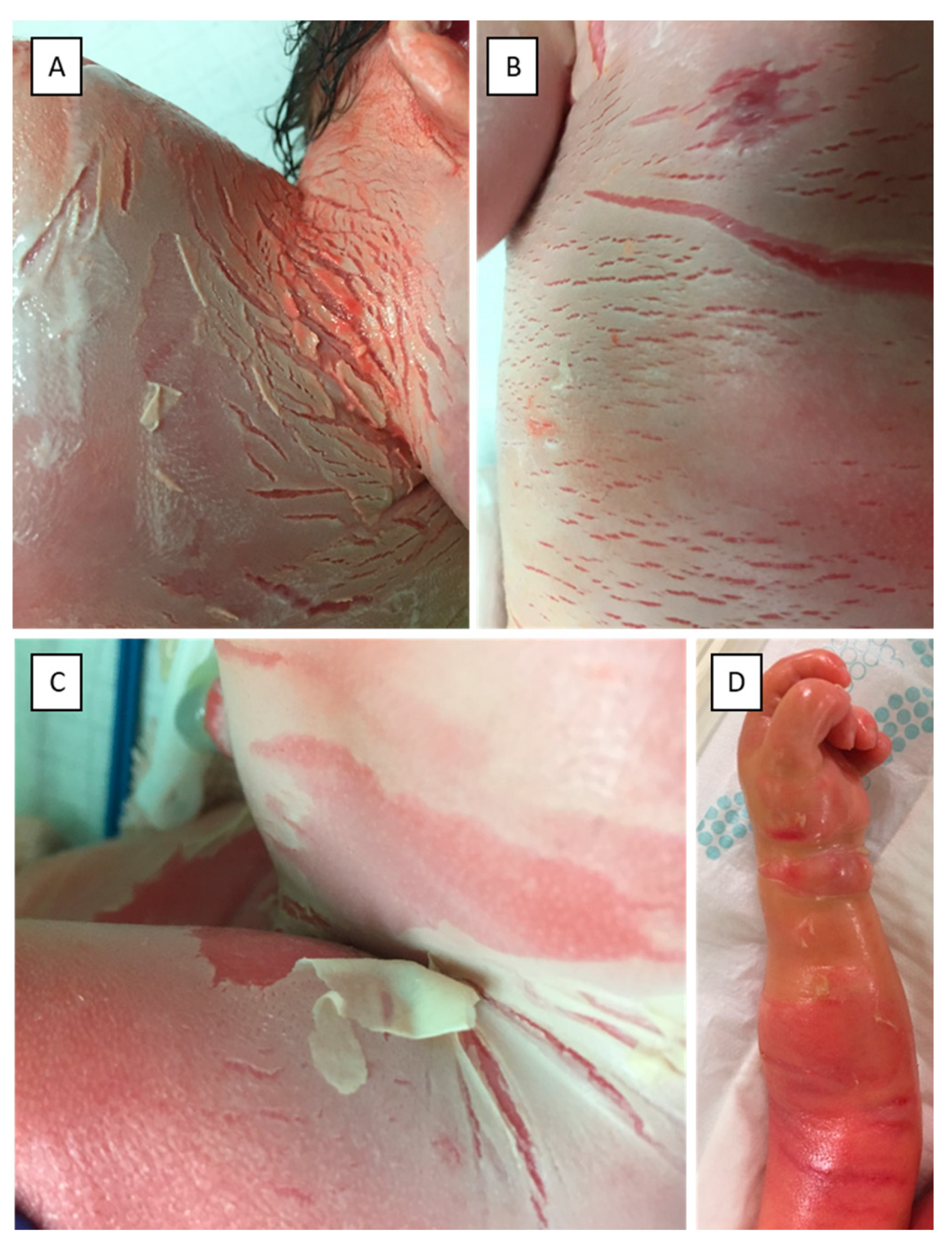
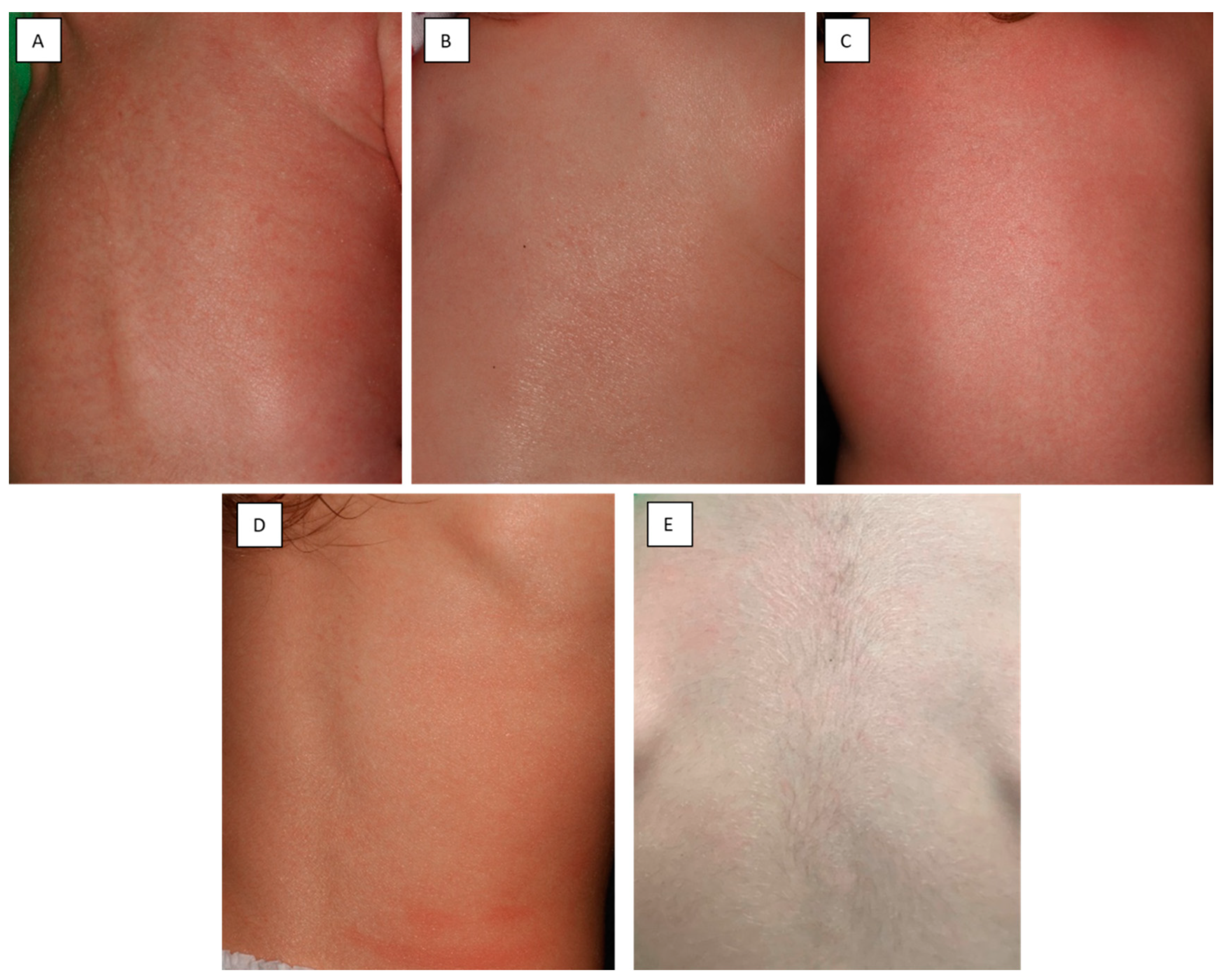
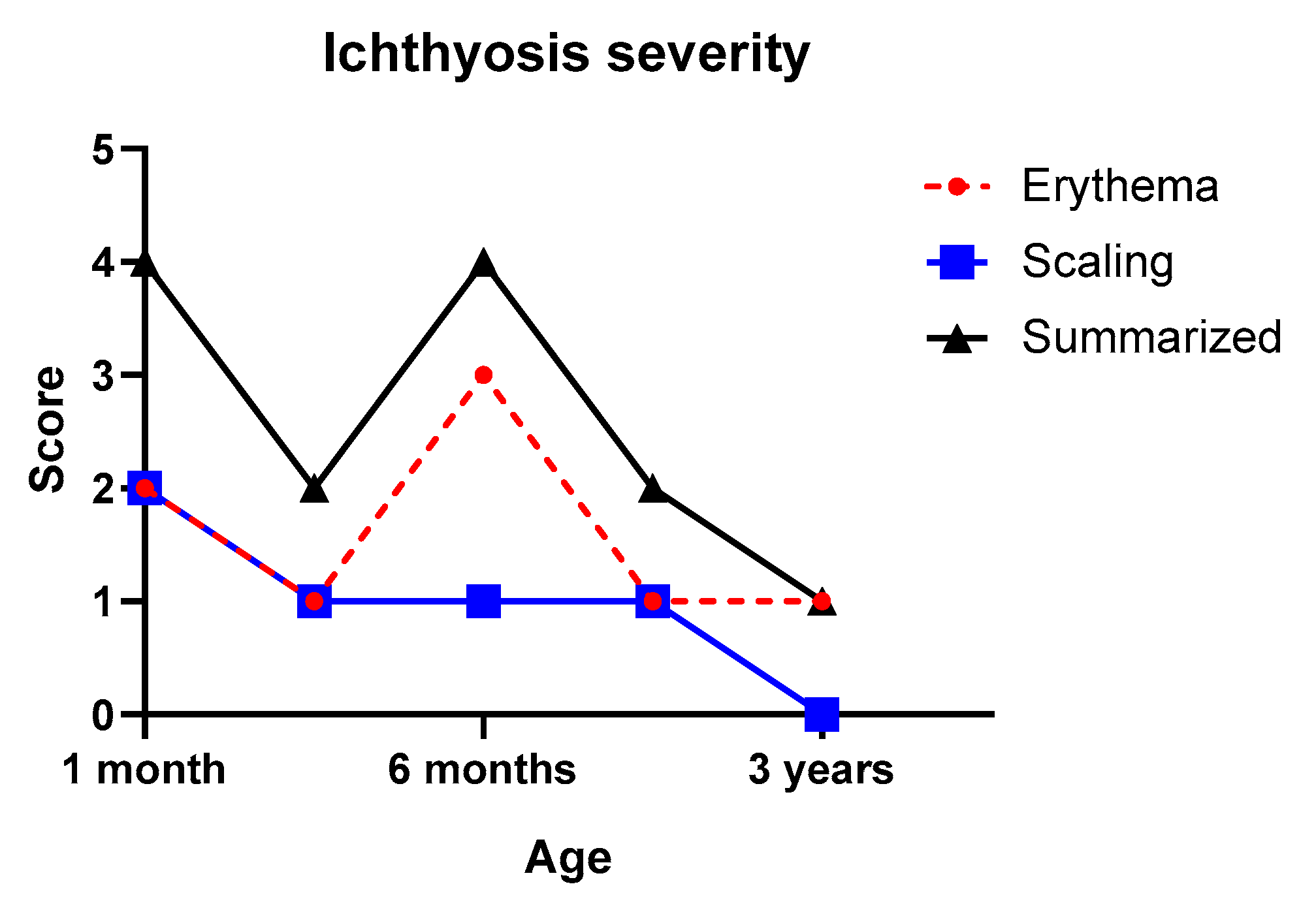
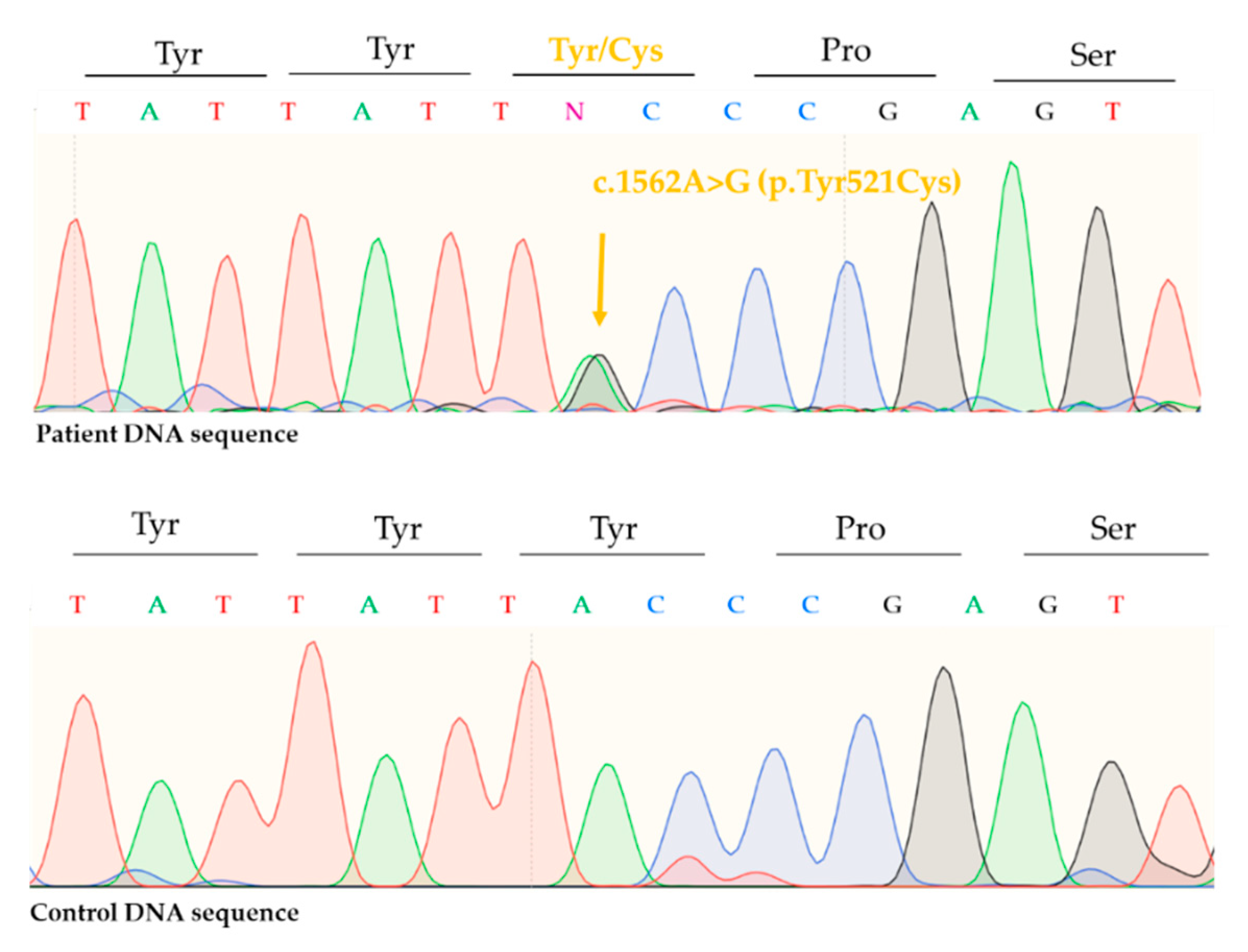
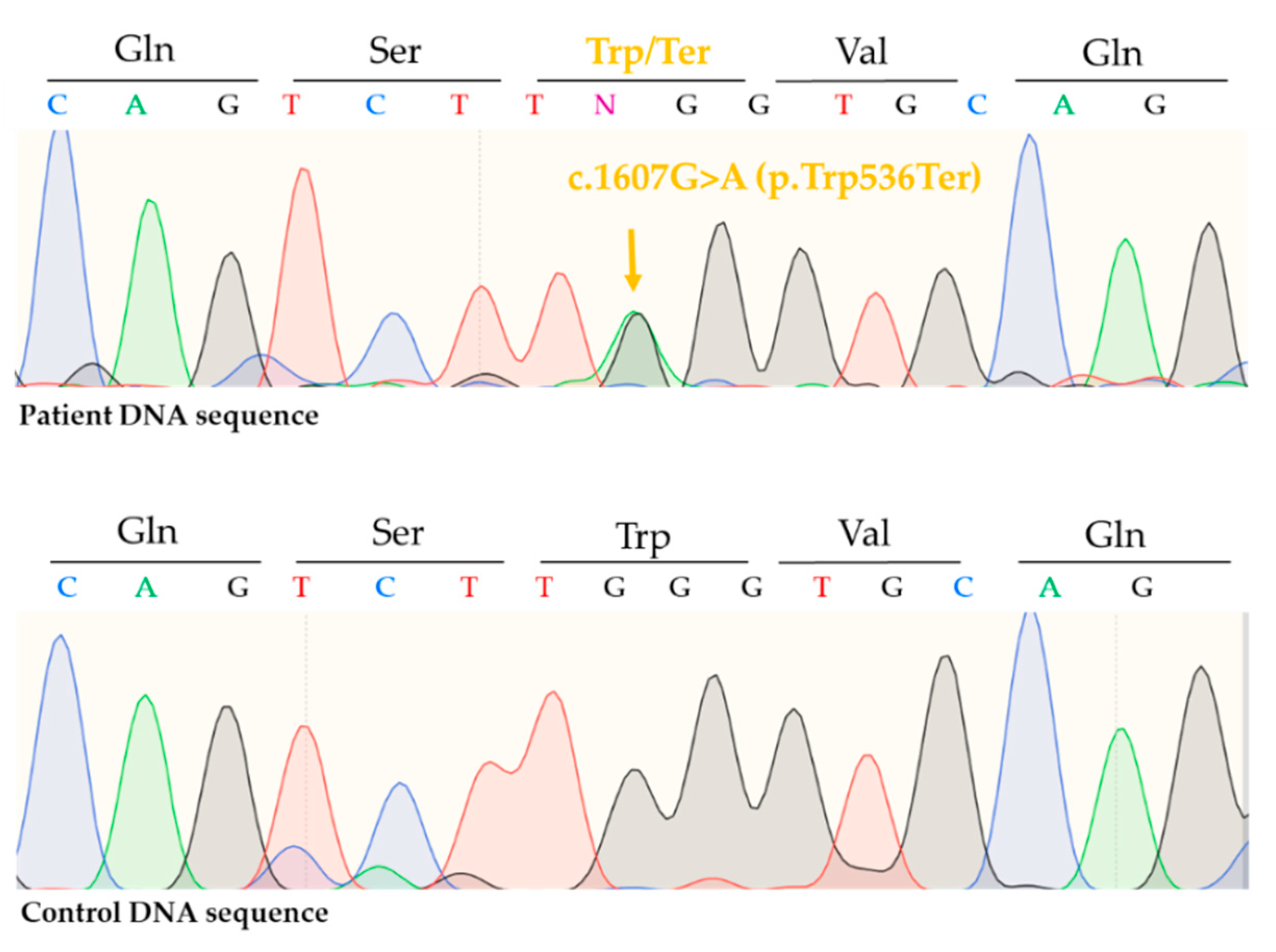
| Forms of ARCI | Gene(s) | OMIM | Frequency of the CB Phenotype | Reference No. |
|---|---|---|---|---|
| Harlequin ichthyosis | ABCA12 | 100% | [9] | |
| Lamellar ichthyosis /Congenital ichthyosiform erythroderma | TGM1 | 242,300 | 73–97% | [9,27] |
| ALOX12B | 242,100 | 71–76% | [9] | |
| ALOXE3 | 606,545 | 36–45% | [9] | |
| NIPAL4 | 612,281 | 15–33% | [9,28] | |
| CYP4F22 | 604,777 | 50% | [29] | |
| ABCA12 | 601,277 | 100% | [9] | |
| PNPLA1 | 615,024 | 58–67% | [9,30,31] | |
| CERS3 | 615,023 | 100% | [9,32,33,34] | |
| SDR9C7 | 617,574 | 0–100% | [9,35,36] | |
| SULT2B1 | 617,571 | 67–100% | [37,38] | |
| locus 12p11.2-q13.1 | 615,022 | 0% | [39] | |
| Self-improving collodion ichthyosis | ALOX12B | 242,100 | 100% # | [19] |
| ALOXE3 | 606,545 | [19] | ||
| TGM1 | 242,300 | [19] | ||
| CYP4F22 | 604,777 | [14] | ||
| Bathing-suit ichthyosis | TGM1 | 242,300 | 88–100% | [40] |
| Acral self-healing collodion baby | TGM1 | 242,300 | 100% # | [41] |
| Disease | Mode of Inheritance | Gene(s) | OMIM | Reference No. |
|---|---|---|---|---|
| Non-syndromic ichthyosis | ||||
| Common ichthyosis | ||||
| Ichthyosis vulgaris | ASD | FLG | 146,700 | [42,43] |
| Recessive X-linked ichthyosis | XR | STS | 308,100 | [42,44] |
| Other forms of ichthyosis | ||||
| Loricrin keratoderma (Vohwinkel syndrome with ichthyosis) | AD | LOR | 604,117 | [45] |
| Congenital reticular ichthyosiform erythroderma/Ichtyosis variegata/Ichthyosis with confetti | AD | KRT10 | 609,165 | [46,47] |
| Syndromic Ichthyosis | ||||
| Recessive X-linked ichthyosis, syndromic form | XR | STS (and others *) | 308,100 | [44] |
| IFAP-syndrome | XR | MBTPS2 | 308,205 | [48] |
| Conradi–Hünermann–Happle syndrome (CDPX2) | XD | EBP | 302,960 | [42] |
| MEND syndrome | XR | EBP | 300,960 | [49] |
| Comel–Netherton syndrome | AR | SPINK5 | 256,500 | [50] |
| Trichothiodystrophy (Tay syndrome) | AR | ERCC2/XPD | 601,675 | |
| ERCC3/XPB | 616,390 | [50] | ||
| GTF2H5/TTDA | 616,395 | |||
| Sjögren–Larsson syndrome | AR | ALD3A2 | 270,200 | [50] |
| Gaucher syndrome type 2 | AR | GBA | 230,900 | [51,52] |
| Neutral lipid storage disease with ichthyosis (Chanarin–Dorfman syndrome) | AR | ABHD5 | 275,630 | [50] |
| Others | ||||
| Hypohidrotic ectodermal dysplasia | XR | EDA | 305,100 | [53,54] |
| Ankyloblepharon–ectodermal dysplasia–cleft lip/palate syndrome (Hay–Wells syndrome) | AD | TP73L | 106,260 | [53] |
| Erythrokeratodermia variabilis et progressiva 4 | AR | KDSR | 617,526 | [55] |
| Palmoplantar keratosis with leukokeratosis anogenitalis | AR | KDSR | n/a | [56,57] |
| Koraxitrachitic syndrome | n/a | n/a | n/a | [26] |
| α-ketoadipic aciduria | AR | DHTKD1 | 204,750 | [24,25] |
| Holocarboxylase synthetase deficiency | AR | HLCS | 253,270 | [58] |
| Congenital hypothyroidism # | AD | PAX8 | 218,700 | |
| AR | TSHR | 275,200 | ||
| DUOX2 | 607,200 | |||
| SLC5A5 | 274,400 | [22,23] | ||
| TG | 274,700 | |||
| TPO | 274,500 | |||
| TSHB | 275,100 | |||
Publisher’s Note: MDPI stays neutral with regard to jurisdictional claims in published maps and institutional affiliations. |
© 2021 by the authors. Licensee MDPI, Basel, Switzerland. This article is an open access article distributed under the terms and conditions of the Creative Commons Attribution (CC BY) license (https://creativecommons.org/licenses/by/4.0/).
Share and Cite
Anker, P.; Kiss, N.; Kocsis, I.; Czemmel, É.; Becker, K.; Zakariás, S.; Plázár, D.; Farkas, K.; Mayer, B.; Nagy, N.; et al. Report of a Novel ALOX12B Mutation in Self-Improving Collodion Ichthyosis with an Overview of the Genetic Background of the Collodion Baby Phenotype. Life 2021, 11, 624. https://doi.org/10.3390/life11070624
Anker P, Kiss N, Kocsis I, Czemmel É, Becker K, Zakariás S, Plázár D, Farkas K, Mayer B, Nagy N, et al. Report of a Novel ALOX12B Mutation in Self-Improving Collodion Ichthyosis with an Overview of the Genetic Background of the Collodion Baby Phenotype. Life. 2021; 11(7):624. https://doi.org/10.3390/life11070624
Chicago/Turabian StyleAnker, Pálma, Norbert Kiss, István Kocsis, Éva Czemmel, Krisztina Becker, Sára Zakariás, Dóra Plázár, Klára Farkas, Balázs Mayer, Nikoletta Nagy, and et al. 2021. "Report of a Novel ALOX12B Mutation in Self-Improving Collodion Ichthyosis with an Overview of the Genetic Background of the Collodion Baby Phenotype" Life 11, no. 7: 624. https://doi.org/10.3390/life11070624
APA StyleAnker, P., Kiss, N., Kocsis, I., Czemmel, É., Becker, K., Zakariás, S., Plázár, D., Farkas, K., Mayer, B., Nagy, N., Széll, M., Ács, N., Szalai, Z., & Medvecz, M. (2021). Report of a Novel ALOX12B Mutation in Self-Improving Collodion Ichthyosis with an Overview of the Genetic Background of the Collodion Baby Phenotype. Life, 11(7), 624. https://doi.org/10.3390/life11070624








